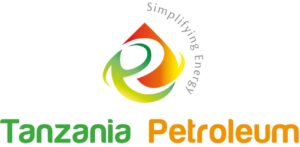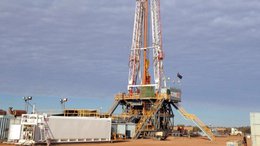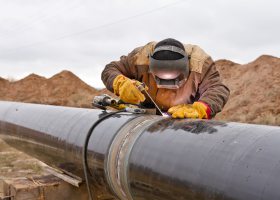Oil and Gas Hot of the Week (OGHOTW) -Story From Mark LaCour
/in Career Advice/by Hussein BoffuMarketing for Oil and Gas: Defining Your Unique Competitive Advantage
/in Career Advice/by Hussein Boffu
As the oil and gas industry mature in Tanzania and East Africa, the competition continues to increase. So,oil and gas buyers have more choices.
Buyers in oil and gas industry have two options:
1.To buy from your company.
2.To buy from your competitors.
To stand out in this competitive industry, you should define your unique competitive advantage.
Competitive advantage is the set of your company’s capabilities that give the reason why buyers should choose your company over the hundreds of others that exist. It is also called distinctive competence or unique selling preposition.
Identifying your distinctive advantages will help you build solid relationship with client, charge good price and attract more business opportunities.
Lack of differentiation among competing products and services in the industry force oil and gas buyer to make purchasing decision based primarily on price.
The buyers in oil and gas industry have tough times evaluating Request for Proposal (RFP) among suppliers who lack the differentiation.
So,they do what they think is easier for them.They evaluate them based on price.
No matter how low you quote your goods and service there will be someone else who has priced their products or services lower than you have.
So if your competitive advantage is lowest price, quality products and services, or delivery time and availability, I can confidently tell you that you are limiting your competitive growth across the industry.
The Biggest Issue
The sad reality is that most technical and professional service companies selling goods and offering services to the oil and gas industry lack (ort hey do not define their) distinctive competence.
When suppliers sell to buyers in the industry, they often focus on features of their products or services rather than the benefit they offer to client.
They look at what their competitors do, and they imitate.There is nothing bad in modeling what is already working. But that makes you look like just another company who competes based on lowest price,quality, reliability and delivery time.
For example, a lot of suppliers try to differentiate on quality or price.
When I read marketing materials or company profiles and brochure of a company in the industry, I discover the following meaningless differentiators:
- “We are a leading provider of quality goods or services in the industry or region.”
- “We offer goods and services in timely manner.”
- “We offer goods and services at competitive prices.”
- “We render our services with high quality and safety of international standards.”
In fact,offering quality goods or delivering them on time is not unique. But that is the best practice of doing business in the oil and gas industry.
Again, delivering the services at safety and international standard is not unique—it’s just the industry requirement.
Even worse, every company promotes her products and service that way in the industry.
Related:Five Stupid Marketing Strategies to Avoid When Marketing in the Oil and Gas Industry
Define Your Unique Competitive Advantage
People believe that there is no uniqueness if what you offer is technical or professional services.
Whether you offer maintenance, repair and operation supplies (MRO) or consulting services, or even construction services such design and fabrication,you must have something unique that distinguishes you from the competition in line with what is desired by buyers in the oil and gas industry.
The first step to uncovering your uniqueness is to find out what buyers want and need in the oil and gas sector.Ask questions such as,“why should they buy from me rather than my competitor? Why should I win this contract?” Once you answer those questions, you will find your unique selling proposition (USP).
Here are characteristics of good competitive advantages:
It might offer strong value to the clients/it might be of perceived value to clients.
Competitors can’t easily copy it.
Are you confused? Let’s discuss a way to define your distinctive competence.
Internal Strength
You can find your unique competitive advantages in your internal capability. Find out what your capability is in every area of your company operation,from R&D, engineering, production, marketing to distribution.
What area of your company operation are you good at and that clients desire?What are the skills or knowledge that you think can product good result to clients?
Also,craft a marketing message that communicate your distinctive competence and put it in all your marketing materials such as websites, company profile and presentation.
Your Turn
What is unique about your company’s product or services? Why should clients do business with you rather than your next-door competitor? If you can’t answer this question, you are losing huge opportunities in the industry.
How Oil and Gas Companies Can Turn Stakeholders into Raving Fans
/in Career Advice/by Hussein BoffuMany oil and gas companies spend thousands of dollars in building and managing their brand value.
But in many oil and gas companies, branding is often the most misused and least effective marketing activity.
Technically speaking, there is one major reason for ineffective branding in the oil and gas industry, and the reason boils down to the tendency of the branding strategies to focus solely on increasing investors outreach,boosting recruiting efforts and creating a positive image in the community.
A huge amount of time and energy is devoted into attracting stakeholders rather than creating raving fans.
Instead of focusing on delivering amazing customer experiences, these companies use branding and communication activities to push and pitch their corporate message.
Your brand is more than just a company name, logo or website.
It is the perception of your company or its reputation. It is what people say and feel about your company and what they expect to achieve by working with you.
If your brand has a good reputation but not have high visibility in the industry, then it would be hard to build a solid brand.
A solid brand has both reputation and high visibility. That means that the brand is well known to target audience in the industry.
And the cost effective way to having a highly visible and well-known brand in the industry is focusing on creating raving fans rather than stakeholders.
The best benefit of creating raving fans is that they amplify your brand’s messages and they take it to the height you would never reach on your own with paid advertising.
Here are some strategies which oil companies can capitalize on to turn their stakeholders into ravings fans who will talk positively about their brand and spread their company’s story to their friends or even colleagues. This will have noticeable impact on their brand.
Show Them Your Efforts and Achievements
Investors who will like to fund your next drilling program want to be invest their money in a visible and strong brand. They also want to be educated about your performance and activities.
By telling them all the efforts that goes into your operations in extracting oil and gas resources, it gives them assurance in your company.
Do this by producing a special report that demonstrates how you overcame a unique challenge and take smart risks, or even share your brand success stories.
Related: Five Stupid Marketing Strategies to Avoid When Marketing in the Oil and Gas Industry
Once this report is published to reputable industry publications and distributed to delegates at major industry events, your brand stories will reach more people that you would never reach on your own with normal annual report.
Don’t let your efforts go unnoticed: tell them your challenges and ways you combated it, and make sure it’s distributed to the delegates at major industry events.
Make Smart Use of Technology
The reality is that the oil and gas industry is one of the slowest industries to adopt new things, especially new technologies. Also the industry is struggling to attract very talented people. For instance, your current workforce will retire in the next 10 years. Guess what? Your company will need to hire young people and students to fill the positions after the current workers retire. And the best way to do so is by making smart use of the new media and digital technology as well.
Creating amazing content on the social media on the way your company deploys new technology to extract oil and gas resources in harsh and dangerous environments, such as the deep water will help develop deep connection with young people and help give them the taste of how is it like to work for your company.
By doing that, you build an image as an educator or trusted advisor for your brand in the industry.This raises their self-esteem and they begin to think that your company is an amazing place to grow their career.
Make It Easy and Fun to Deal with Host Communities
Host communities support brand that care for them. When you demonstrate your care about a community, the community will in turn care about your brand and have positive perception about your brand.
The communities do not care about your company name or logo, but they care how your operations benefit them. The era of pushing your corporate message has ended.To build your brand,your marketing strategies should deliver amazing experience and, if done well,these communities will become evangelists for your brand.
Final Word
When your company has raving fans, you attract investors easily, and the best employees will want to work for you. So, it will make recruiting the best talents easier.
Five Stupid Marketing Strategies to Avoid When Marketing in the Oil and Gas Industry
/in Career Advice/by Hussein Boffu
Whether you market directly to oil and gas companies or you approach their prime contractor, some marketing blunders will waste your time and money.
In this article, I will outline a list of common marketing mistakes made by companies trying to market to the oil and gas industry.
- Not Understanding the Goal of Marketing in the Industry
If you ask many suppliers and service providers what the purpose of their marketing is, they will say that it is to sell their products and services to companies in the industry.
But the goal of marketing and branding in the oil and gas industry is not to make quick sales.
The ultimate purpose is to find people who are interested in your offer and to put them into your follow-up database, so that you can offer them value and create long-term relationships built on trust.
After making a first sale comes the consequences. You need to accept the fact that people in the oil and gas industry do not buy right after being offered a product or service. However, you can immediately make sales once you have developed a solid relationship with clients.
- No Differentiator
I spend time reading marketing materials and company profiles of many technical suppliers and professional service companies. You can summarize the structure of their company profiles and marketing materials for most of these companies as follow:
-Company logo.
-Company name.
-List of products and services.
-A meaningless slogan claiming to be leading suppliers in the region or providers of quality goods and services.
In fact, most of the equipment and professional service providers have no unique selling proposition that sets them apart from their competitors.
Their marketing materials have been designed to be all about their brand rather than the benefits they offer to a prospect. These are the brochures they send to prospects.
Claiming that you offer good services at international standards isn’t what differentiates you from your competitors because every company claim to be the provider of quality services.
Also, offering quality services is not unique; it’s just the best practice of doing business in the industry.
Related: A Toolbox For Marketing In Oil, Gas& Energy Sector
Your company profile, website and marketing materials are the most powerful lead generation tools you have. Because they give clients a sneak peek into how it is like working with you. When you write marketing materials, ask yourself why clients should buy from you rather than your competitors. Then write a material communicating your answer: that is, the benefits and values you would offer the client.
- Forgetting Online Branding
Digital marketing and branding are questionable strategies to most technical and service companies in the oil and gas industry. But today, buyers look for a better result at competitive rates.
They also want to be better informed before they make a purchasing decision. So, they do their homework online first before deciding to buy. They also research for specification and prices as well.
So, if you use your website and create contents that educate your clients on your experiences, or if you share something valuable on what you do, your company would generate new leads or even be considered at the time of RFP evaluation.
- Not Realizing the Power of Brand Building
Most companies in the industry have not yet realized the full potential of building their brand.
Your brand is not just a logo, company name or website. Your brand is your reputation and visibility in the marketplace. A well-known brand easily secure new business ventures, attract strong partners and recruit the best talents.
- Positioning Yourself as a Supplier Rather than a Partner
Buyers in the oil, gas and energy sector look for partners who will have a long-term collaboration in a win-win situation with them.
Don’t be seen as a vendor on the supplier’s list. Position your company as a partner who offers value for mutual benefits.
A Toolbox For Marketing In Oil, Gas& Energy Sector
/in Career Advice/by Hussein BoffuPeople believe that the oil and gas industry in East Africa is relatively new, and so it generates few opportunities.
I totally agree that Tanzania and Uganda are in the early stages of developing their oil and gas resources. But that does not mean that the industry presents limited opportunities in the region.
Opportunities are numerous in the oil and gas sector in East Africa.
If you look deep into the oil and gas sector in Tanzania, you will notice three things:
First, we have a lot of oil and gas facilities, such as natural gas plants, power plants, and oil depots. And they need recurring services such as maintenance and equipment supply that would keep the facilitiesrunning.
Secondly, oil and gas companies are still producing oil and gas resources.
Thirdly, major projects are coming on stream. There is the East African Crude Oil Pipeline (EACOP) project. We shall soonwitness the Tilenga and Kingfisher project in Uganda.
The good news is that, each day, these projects are in need of goods and services that your company can provide and thereby benefiting from the significant natural gas and oil discovery in the region.
Your Brand is Your Most Important Asset
Opportunities in the oil and gas sector in Tanzania and East Africa are numerous.
But marketing for the oil and gas industry needs a different approach. This is an industry where deals are made through handshakes and relationship.
Brand building is the key to developing industry relationship with clients, generating new business leads, and attracting talented employees.
The purpose of marketing and branding in the oil and gas sector is not to make quick sales but to find people who are interested in your offer and put them into your follow up database so that you can build a strong relationship with them.
If your company understands the relationship-based culture of the oil and gas industry and starts implementingmarketing solutions that build your brand value, then you will start to experience an amazing result. The contract will come naturally.
The oil and gas business is a very competitive industry. More companies like yours are looking for better ways to connect and create a solid relationship with clients. A strong brand presents you with numerous opportunities. It helps you build a relationship with clients, stand out from the competition, and win more jobs.
The Biggest Obstacle Facing Service Providers inthe Oil and Gas Sector in Tanzania and East Africa
The common belief among many people is that lack of finance is the biggest obstacle holding back the service sector in growing their business the oil and gas sector.
To me, funding is not a big issue for service providers in Tanzania. Most of the companies providing technical, consulting and professional services have a good reputation in offering amazing products and services.
But they often lack industry brand awareness that gets them considered for sourcing finance, attracting the best talent, and securing new business.
Your company’s brand might have an excellent reputation, but it should have high visibility in the oil and gas marketplace, too.
You can’t underestimate the impact of a visible brand in the energy sector. A strong brand has an easier time attracting new clients and securing funds, and the best employees will want to work with that company.
And once you win a contract or oil companies gives you a purchasing order, the bank can easilyfinance your working capital.
Five Things Public Relations and Marketing Communication Can Help Your New Brands Achieve in the Oil, Gas and Energy Sector in Tanzania and East Africa
/in Career Advice/by Hussein BoffuHow East African Nations Can Maintain Control of their Oil and Gas Sector while Attracting Huge Foreign Direct Investments
/in Career Advice/by Hussein BoffuA New Business Model for the Oil and Gas Companies in Tanzania and East Africa
/in Career Advice/by Hussein Boffu- Foreign exchange rates
- Extra paper work and documentation such as work permit, resident permit etc.
- Import duties
- Agent brokers and middlemen expenses.
- Import and customs fees*
Skilled Labor Shortage: What the Oil Industry in East Africa Need to Do
/in Career Advice/by Hussein BoffuABOUT TANZANIA PETROLEUM
Tanzania Petroleum helps you reach your goals.
CONTACT US
Dar es Salaam, Tanzania
+255655376543
info@tanzaniapetroleum.com









